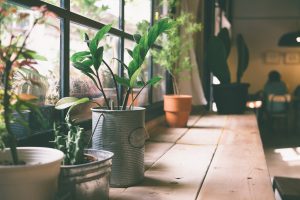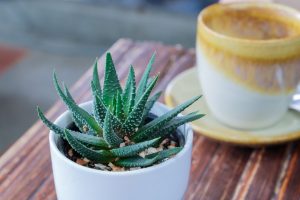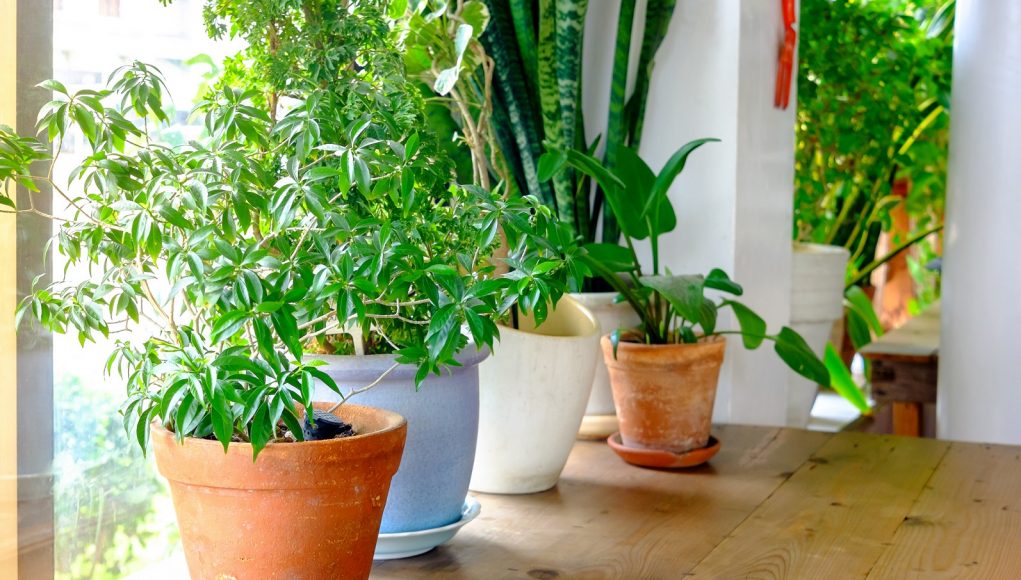Ten Reasons Why Indoor Plants Are Good for You
Life indoors is cushy and luxurious, protecting us from ever-present danger – but the reality is that it severs our timeless relationship with the natural world on which our wellbeing and natural cycles depended
Indoor Toxicity
According to a 1989 NASA study titled ‘Interior Landscape Plants for Indoor Air Pollution Abatement’, nitrogen oxide and Volatile Organic Compounds (VOCs) build up in the air and irreparably damage our health when concentrated.
VOCs comprise three main toxins – formaldehyde (found in carpets, polythene bags and cigarette smoke), benzene (concentrates in the kitchen and study areas where print and books are in stock) and trichloroethylene (manmade paint and solvents).
‘Sick Building Syndrome’ (SBS)
SBS is a recognized medical condition caused by unhealthily indoor environments. Determining factors include bad ventilation, inadequate light control, improper air conditioning, background noise, etcs.
Plant Power – Health Insurance of the Future
House plants neutralize a multitude of ill effects, making indoor landscaping crucial to your health.
- Reduce Pollutants
Plants act as sponges, breaking down toxic compounds that they eventually release as harmless by-products. They neutralize up to 87% of VOCs within 24 hours. Microorganisms in their root zone convert VOCs into plant food.
The implication this has on your health is a decreased risk for asthma, allergies, cancer and auto-immune diseases. Based on study findings NASA recommends one potted plant per 100 square feet of indoor space.
- Air Circulation and Temperature Regulation
Air conditioning, increased insulation and energy technology limit air exchange. Having a considerably large surface area and regularized natural cycles (like photosynthesis), plants enable the exchange of water and gases, circulating the air and naturally stabilizing temperatures. They boost indoor air quality.
A reduction in carbon-di-oxide levels reduces the feeling of drowsiness.
- Better Quality Sleep
Certain plants (e.g. gerbera daisies) give out oxygen at night, and when placed in the bedroom, enhance the quality of your sleep.
- Manage Humidity
Low humidity becomes a cesspool for viral infections, while high humidity encourages the spread of diseases. For optimum health, humidity should be maintained between 30% to 60% so viral infections have a low rate of survival and transmission.
Plants are natural humidifiers, thus helping you fight colds, coughs, sore throats and skin ailments.
Did you know that wood cracks when dry and undergoes structural damage at elevated levels of moisture? Plants reduce overhead costs by managing indoor humidity.
- Reduce Airborne Dust
Plants reduce and remove stuffy, stale air and dust, reducing your chances of headaches. Peace Lilly, for example, reduces particulate matter impacting dust reduction by 20%.
- Overall Mental and Physical Wellbeing
In its study, Kansas State University noted a significant improvement in physiologic response (lower blood pressure, pain, anxiety and fatigue) of patients with plants in their room, as compared to those without.
- Healing and Pain Relief
A Texas A&M University studying ‘horticulture therapy’ assigned patients plants to take care of. The ones that did experienced a clearly reduced recovery period.
- Immunity Booster
Exposure to natural allergens builds stronger immunity in kids. Similarly, plants act as natural allergy shots thus boosting immunity.
- Brain Function Enhancement
Being surrounded by plants improves the quality of idea generation, reduces sickness, absenteeism and mistakes at the workplace. It helps memory, concentration, retention, productivity and a quicker recovery from mental fatigue.
- Effective Noise Barrier
Plants reduce background noise by absorbing, reflecting and/or refracting it making for a healthy, fresh indoor environment.
 Some indoor plants you could get for home or office:
Some indoor plants you could get for home or office:
- Aloe Vera
- Boston Bamboo
- Dwarf/ Pygmy Date Palm
- Bamboo or Reed Palm
- Baby Rubber Plant
- English Ivy
- Ficus Alii
- Gerbera Daisy
- Lady Palm
- Dragon Tree
- Orchids
- Peace Lilly
- Snake Plant
- Umbrella Tree
- Spider Plant
- Golden Pothos
- Chrysanthemum
- Mother-in-law’s Tongue
- Azalea
- Red-edge Dracaena
















































